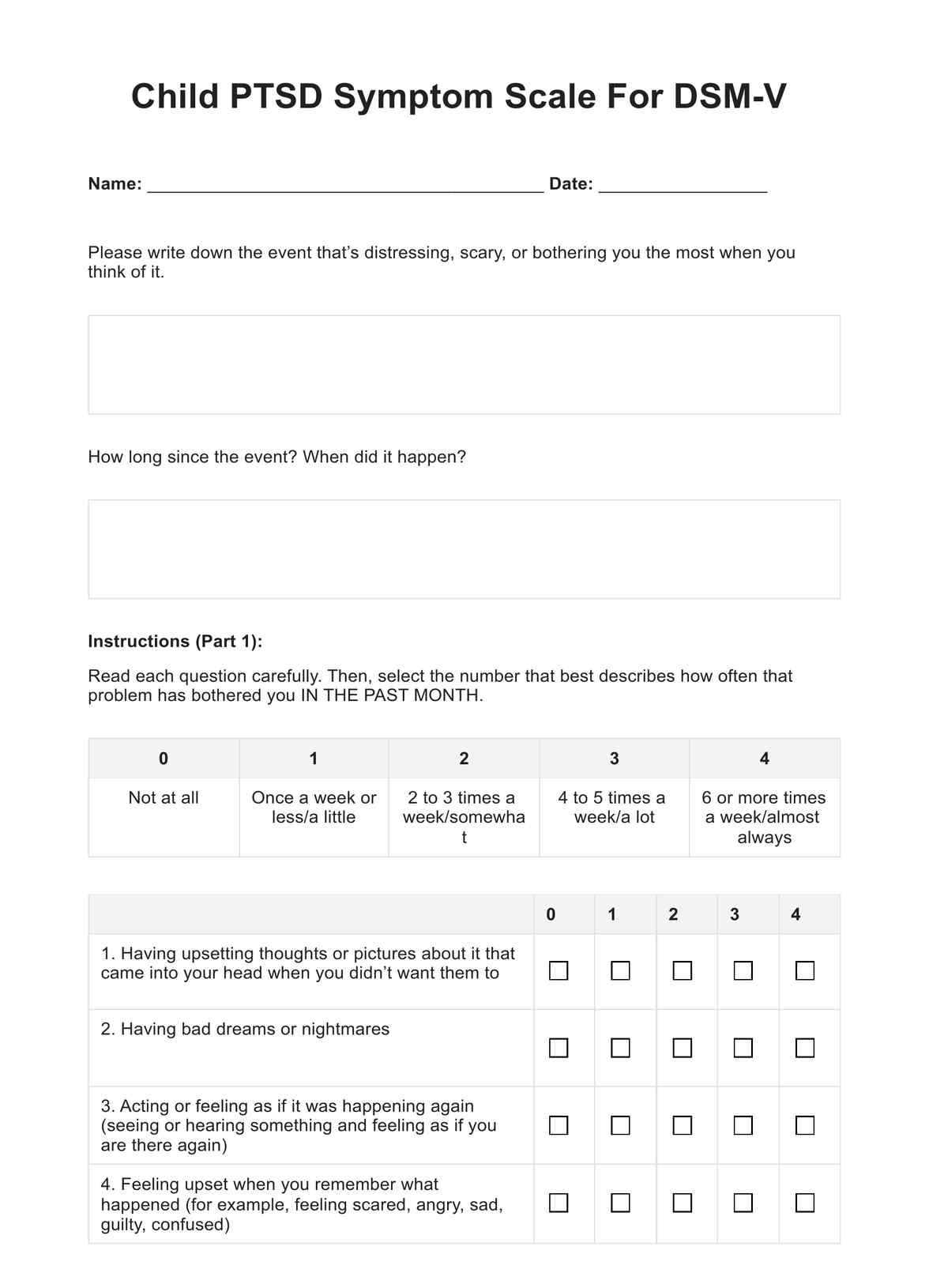It can take from 30 minutes to an hour, depending on the child’s comprehension abilities.

Child PTSD Symptom Scale
Evaluate the severity of post-traumatic stress disorder using the Child PTSD Symptom Scale based on DSM-5 diagnostic criteria of PTSD.
Use Template
Child PTSD Symptom Scale Template
Commonly asked questions
You can interpret the findings using the severity range guide provided in the first section of this guide.
Licensed specialists such as psychologists, clinicians, psychiatrists, and therapists can use and benefit from the Child PTSD Symptom Scale.
EHR and practice management software
Get started for free
*No credit card required
Free
$0/usd
Unlimited clients
Telehealth
1GB of storage
Client portal text
Automated billing and online payments











